- Home
- D. H. Lawrence
The Rainbow (100th Anniversary ed.)
The Rainbow (100th Anniversary ed.) Read online
David Herbert Lawrence (1885–1930) was born in the mining village of Eastwood, near Nottingham, England. His father was an uneducated miner; his mother, a former schoolteacher. Lawrence began his first novel, The White Peacock (1911), while attending Nottingham University. In 1912, he ran away with Frieda von Richthofen, the wife of one of his professors. They were married in 1914. Suffering from tuberculosis, Lawrence was in constant flight from his ill health, traveling through Europe and around the world by way of Australia and Mexico, settling for a while in Taos, New Mexico. Lawrence and Frieda returned to Europe in 1925. Among his more than forty volumes of fiction, poetry, drama, criticism, philosophy, and travel writing are Sons and Lovers (1913), The Rainbow (1915), Women in Love (1920), Studies in Classic American Literature (1923), The Plumed Serpent (1926), and Lady Chatterley’s Lover (1928).
Daphne Merkin is an essayist, novelist, and literary critic. She is a contributing writer at The New York Times Magazine and Elle, and she writes for Slate, Book Forum, and many other publications.
SIGNET CLASSICS
Published by the Penguin Group
Penguin Group (USA) LLC, 375 Hudson Street,
New York, New York 10014
USA | Canada | UK | Ireland | Australia | New Zealand | India | South Africa | China
penguin.com
A Penguin Random House Company
Published by Signet Classics, an imprint of New American Library,
a division of Penguin Group (USA) LLC
Introduction copyright © Daphne Merkin, 2009
Penguin supports copyright. Copyright fuels creativity, encourages diverse voices, promotes free speech, and creates a vibrant culture. Thank you for buying an authorized edition of this book and for complying with copyright laws by not reproducing, scanning, or distributing any part of it in any form without permission. You are supporting writers and allowing Penguin to continue to publish books for every reader.
REGISTERED TRADEMARK—MARCA REGISTRADA
ISBN 978-0-698-19669-8
If you purchased this book without a cover you should be aware that this book is stolen property. It was reported as “unsold and destroyed” to the publisher and neither the author nor the publisher has received any payment for this “stripped book.”
Version_1
Introduction
The first thing to be said about D. H. Lawrence—if only to face the reality head-on, before it spreads like an unspeakable but invincible conviction leaking from the reader’s subconscious onto the page—is that there is something deeply disturbing about him. It is impossible, that is, to respond to his febrile imagination and equally febrile prose with neutrality, the way one approaches so many other writers: liking some more than others; preferring the early accessible style of Henry James to the later involuted version; warming up to a muscular voice, like Dickens’s, over a more lyrical one, like Virginia Woolf’s.
Lawrence’s writing defies such familiar literary signifiers as “original” or “daring.” It is sui generis: Take him or leave him, he sounds and thinks like no one else. It makes sense, therefore, that his work has been hotly debated by even the most sophisticated readers since it first saw the light of day, with the publication in 1911, when Lawrence was twenty-six, of his first novel, The White Peacock. Already here it was clear that the subject that preoccupied the young author with the intense blue eyes and flaming red beard (his full name was David Herbert Lawrence but he began using the initials “DHL” or “D. H. Lawrence” as his signature already as an eighteen-year-old) was the fraught and culturally defended-against one of sexual desire—what he would describe years later, shortly before he died, as “the full conscious realization of sex.” Virginia Woolf, in a review of one of Lawrence’s minor novels, The Lost Girl, noted that “the problems of the body” were “insistent and important” for him; sex for Lawrence “had a meaning which it was disquieting to think that we, too, might have to explore.”
The disquiet has taken two directions: There have always been those, like the churchy British critic F. R. Leavis, who saw outright genius in him; in his (these days mostly ignored) seminal work, The Great Tradition, Leavis considered Lawrence to be far more of a creative innovator and “master of language” than James Joyce. And there have always been those, like T. S. Eliot—who remarked that the author of Lady Chatterley’s Lover “seems to me to have been a very sick man indeed”—who read his work as the ravings of a lunatic, possessed of a psychological disorder that went under the disguise of literature.
Indeed, although we often think of creative people as being crazy—in the sense of different, unaccountable, out of the ordinary—Lawrence’s “offness” is a primary aspect of his work, part and parcel of the visionary as well as the curiously moralizing impulse in him. (The critic Diana Trilling got close to the intuitive truth about his character when she observed in her introduction to the 1958 collection of his letters that “so much a poet, he yet insists that we read him as a preacher.”) Lawrence’s interest is neither in capturing the established order of things nor in subverting it; rather, he is out to bring us news (whether more or less lucid depends on the individual work and the subjective response of the reader) of different human possibilities altogether. As John Worthen describes it on page 83 of his superb biography, D. H. Lawrence, The Life of an Outsider: “The writer and the man wanted to discover new, post-religious ways of describing fulfillment: a state of self (or being) in which detached consciousness and body were not fatally divided but somehow brought together.”
“My great religion,” Lawrence wrote in a 1913 letter, “is a belief in the blood, the flesh, as being wiser than the intellect. We can go wrong in our minds. But what our blood feels and believes and says, is always true.” (This from a man who several years earlier had gotten into an argument with a friend who insisted that women had pubic hair and who had listed “sex matters” on a list of things for which he did not much care.) As much of a disbeliever in ordinary religious precepts as he may have been—he was convinced there was no “personal God”—Lawrence devoutly believed in his own philosophical effusions. It is from this perspective—call it primitive, neo-Fascist, sublime, or ridiculous—that he chooses to write. It is also this perspective that underlies the often peculiar literary effects he aims for and that has led over the years to the many charges that have been brought against him. English obituaries following upon Lawrence’s death in 1930 referred variously to his “pathological traits” and to the fact that he wrote “with one hand always in the slime,” while his current decline both in and out of academia casts him as something of a politically incorrect, antediluvian joke—misogynistic, colonialist, racist, homophobic, way too florid, and embarrassingly unironic.
The Rainbow, published in 1915, when Lawrence was thirty, was his fourth novel. It had been preceded by a largely forgotten effort called The Trespasser and, more significantly, by Sons and Lovers, published in 1913. The least programmatic and most widely read of Lawrence’s fiction as well as the work most likely to be included in a high school or college syllabus still willing to afford Lawrence a canonical place, Sons and Lovers is a transparently autobiographical recounting of an intensely Oedipal romance. Its characters include a weak coal miner father; his more educated, middle-class, and deeply puritanical wife, who scorns him; and a son, Paul Morel, in whom the mother invests all her fiercely possessive love only to have him finally break out of her grasp after her death. It was something of a psychological breakthrough for Lawrence, enabling him to come to terms with the issues that plagued him all his life about the relations between men and women—a scenario that inevitab
ly centered on a woman in a dominant but also life-giving role and a man in danger of being subjugated by an energy stronger than his own. Although Lawrence had not yet read Freud, the critic Graham Hough caught the book’s spirit when he described it as “the first Freudian novel in English,” one in which the “Freudianism is mediated not by a text . . . but by a person.”
Ambitious and expansive as it is, The Rainbow originally started out in 1913 as what Lawrence referred to as a “potboiler” titled “The Sisters.” It mutated into “The Wedding Ring” in 1914 and then, in 1915, split into two books: The Rainbow and what would become its sequel, Women in Love. Although the two are considered by many to be his greatest novels, Lawrence’s insistence on exploring the taboo subject of the unself-conscious, erotically aware body (“Sex is the fountain head, where life bubbles up”) put him in a vulnerable position when it came to the prevailing Victorian code of propriety and its accompanying censorship laws. The Rainbow had barely seen the light of day in the autumn of 1915 when it was flagged as the work of a heinous offender; two reviews called for the book to be suppressed and one favorable review was pulled by the newspaper about to run it. The novel’s sexual candor was equated with moral rot: “A thing like The Rainbow has no right to exist in the wind of war,” a reviewer grandiloquently observed. “It is a greater menace to our public health than any of the epidemic diseases. . . . [T]he young men who are dying for liberty . . . are the living repudiations of such impious denials of life as The Rainbow.”
In the following months, Lawrence’s publishers, Methuen, first withdrew their advertisements and then shamelessly disavowed their belief in the novel’s validity as a work of art by refusing to defend it in court (it was prosecuted in November under the Obscene Publications Act of 1857), choosing instead to issue a statement that “they regretted having published it.” The novel was banned, furthering Lawrence’s growing disdain for his native country (“I shall never forgive England The Rainbow”) and leading him to seek out an American publisher for Women in Love, which was finished in 1916 but only published in 1920, prior to the British publication.
Lawrence began work on the reconceived draft of The Rainbow during a sojourn in Italy after he had run off with the married Frieda Weekly in what was undoubtedly the most significant event of his life. He had first come upon Frieda, fetchingly surrounded by her three children, less than six months earlier on a March morning in 1912. He had been invited for lunch by her husband, Ernest, a professor of modern languages whom Lawrence had contacted in connection to his forthcoming trip to Germany. Frieda herself was the daughter of a German aristocrat, Baron von Richthofen, and one of three sisters, all of whom led unconventional lives that included extramarital affairs. (Both Frieda and her sister Else had affairs with the psychoanalyst Otto Gross.) She was six years older than Lawrence and, despite her extramarital wanderings, had settled comfortably into a bourgeois life that sounds like something out of Jane Austen, including social calls and afternoon tea. At least for Lawrence, who appears to have been immediately smitten, the cliché “love at first sight” applies to this romance more persuasively than it does to most outbreaks of passion. With several intense love affairs and one broken engagement behind him, all of which had generated an intolerable level of conflict about intimacy and commitment, he responded to Frieda with uncharacteristic wholeheartedness. Within a few days of meeting her, he told her she was “the most wonderful woman in all England.’’ Within two months, in spite of Frieda’s anguish over losing her children to their father (she would thereafter only see them on and off in lawyers’ offices for half hour meetings), the two of them had decided to forge a partnership that would prove tumultuous but enduring. They married in 1914 and were together until Lawrence’s untimely death of tuberculosis at the age of forty-five in 1930.
The Rainbow—whose main character, the volatile Ursula Brangwen, is based on Frieda—is a multigenerational saga that unfolds over a period of sixty years. It is a Buddenbrooks of sorts, following the decline in moral and spiritual standards that takes place as parents hand on their legacy to children. Except, of course, that there are more differences than similarities. Thomas Mann’s concern was with the attrition of character that occurs as one generation succeeds another and with the specter of decadence that hovers on the rim of traditional values. Lawrence, on the other hand, is concerned with the destruction of prelapsarian rural life and the emerging strife between men and women as the modern, urbanized world leads them away from harmonious instincts toward greater individuation even as it makes them less human. Then, too, there are the radically different sensibilities of the two men. Mann was an orderly Teutonic sort with a bourgeois vision of family life (he himself had six children) that focused on the pursuit of culture and wealth at the cost of being true to one’s instinctual urges. Lawrence was an antirationalist sensualist with a love of nature and a conviction that spiritual ecstasy lay at the end of the struggle toward erotic fulfillment.
And they kissed on the mouth, in rapture and surprise, long, real kisses. The kiss lasted, there among the moonlight. He kissed her again, and she kissed him. And again they were kissing together. Till something happened in him, he was strange. He wanted her. He wanted her exceedingly. She was something new. They stood there folded, suspended in the night. And his whole being quivered with surprise, as from a blow. He wanted her, and he wanted to tell her so. But the shock was too great to him.
(page 129)
All this and the couple—Will Brangwen and his wife-to-be, Anna—have not yet moved beyond kissing 101. (One can see why Lawrence, with his hyperventilating descriptions of sexual arousal and his trembling-and-shaking approach to the erotic, is so out of step with today’s jaded, “been there, done that” attitude to sex.) This moment of revelatory desire plays out against the backdrop of a moonlit night, in which Anna and Will stack sheaves of corn at Marsh Farm, a patch of bucolic paradise set in the rural Midlands where Anna was born and raised. The scene is an emblematic one, featuring Lawrence’s keen attunement to and skillful personification of the natural landscape through his rhythmic and defiantly idiosyncratic use of language. (“A large gold moon hung heavily to the grey horizon, trees hovered tall, standing back in the dusk, waiting” [page 125].) It is a style suggestive of all the ambiguity that language by necessity cannot articulate, the hesitations and shifts that tend to fall by the wayside of more conventionally descriptive prose:
And always, she was gone before he came. As he came, she drew away, as he drew away, she came. Were they never to meet? Gradually a low, deep-sounding will in him vibrated to her, tried to set her in accord, tried to bring her gradually to him, to a meeting, till they should be together, till they should meet as the sheaves that swished together.
(page 127)
The Rainbow opens in 1840 with the construction of a canal that connects the meadows of Marsh Farm to the newly opened collieries in the surrounding valley, a modernization that brings to an end what Lawrence invokes as an Edenic world—one in which the human and natural terrain are still in sync with each other: “They felt the rush of the sap in spring, they knew the wave which cannot halt, but every year throws forward the seed to begetting, and, falling back, leaves the young-born on the earth” (page 6). The farming family at the heart of the novel is marked by a kind of languid, conqueror’s sensibility: “There was a look in the eyes of the Brangwens as if they were expecting something unknown, about which they were eager. They had that air of readiness for what would come to them, a kind of surety, an expectancy, the look of an inheritor” (page 5). The first Brangwen we meet is Tom, born after the Fall. Although only in his twenties, he is already disillusioned (in the biblical wording that Lawrence often employs) by his “first carnal contact with woman”—“tormented . . . with sex desire” (page 19). He eventually marries Lydia Lensky, a Polish widow six years older than he (shades of Frieda) who has come to the area with her small daughter to work as a housekeeper for the local vi
car. Despite the emphasis on the “utter foreignness” (page 49) between Tom and Lydia, there is also something almost proverbially intimate about their relationship: “he knew she was his woman, he knew her essence, that it was his to possess. And he seemed to live thus in contact with her, in contact with the unknown, the unaccountable and incalculable” (page 61).
Although Tom and Lydia have two sons, it is Anna Lensky, Lydia’s daughter from her first marriage, whom the novel next takes up. Anna is the apple of her stepfather’s eye, an imperious little creature who grows up to marry her step-cousin Will Brangwen. This marriage—among other things, The Rainbow might be said to be a novel about different styles of marriage—is depicted as less mystical and more ordinary than the union between Tom and Lydia. But, as is true of all of Lawrence’s male-female relationships, Anna and Will seesaw back and forth as first one, then the other, asserts or yields his or her dominant will. This dynamic continues to assert itself in the next generation, when Anna and Will’s daughter, Ursula, is torn between succumbing to desire for Anton Skrebensky, a Polish soldier, and resisting this same desire in order to preserve her brittle sense of independence. The result is a kind of erotic dance to the death: “She took him in the kiss, hard her kiss seized upon him, hard and fierce and burning corrosive as the moonlight. She seemed to be destroying him. He was reeling, summoning all his strength to keep his kiss upon her, to keep himself in the kiss” (page 339). Their love-hate, push-pull relationship, so typical of Lawrence’s fraught treatment of the challenge of heterosexual intimacy, is played out over and over again. By the end, Skrebensky has married someone else and Ursula is left to her insistent, terror-imbued solitude—save for a glimpse of something else, something yet to come, that is ushered in by the image of the “faint, vast” rainbow of the book’s title: “In one place it gleamed fiercely, and, her heart anguished with hope, she sought the shadow of iris where the bow should be” (page 521).

 Look! We Have Come Through!
Look! We Have Come Through!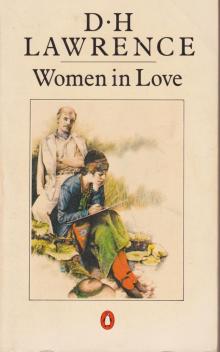 Women in Love
Women in Love The Ladybird
The Ladybird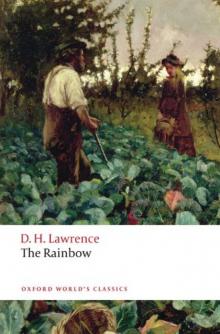 The Rainbow
The Rainbow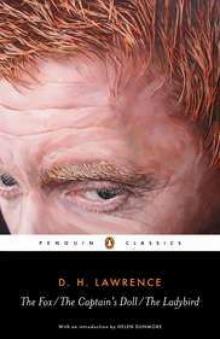 The Captain's Dol
The Captain's Dol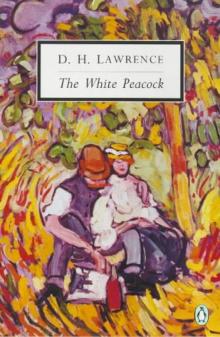 The White Peacock
The White Peacock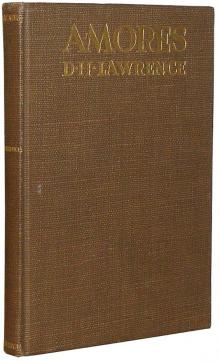 Amores
Amores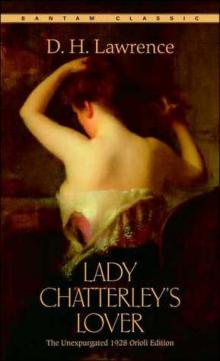 Lady Chatterley's Lover
Lady Chatterley's Lover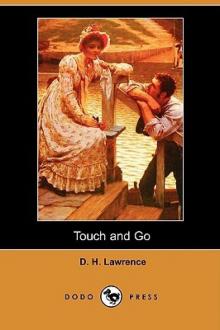 Touch and Go
Touch and Go The Wintry Peacock
The Wintry Peacock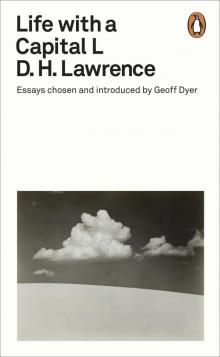 Life with a Capital L
Life with a Capital L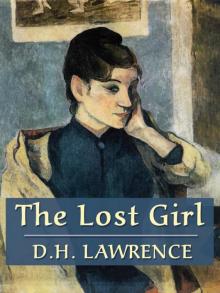 The Lost Girl
The Lost Girl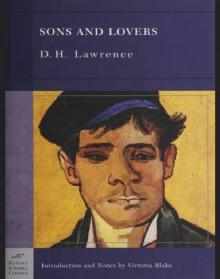 Sons and Lovers
Sons and Lovers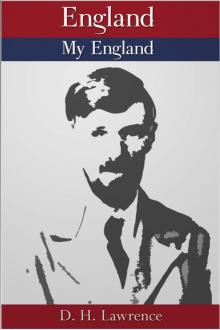 England, My England
England, My England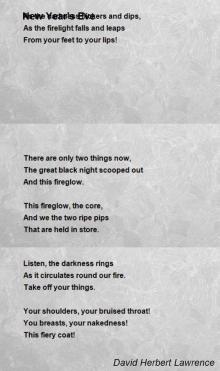 New Poems
New Poems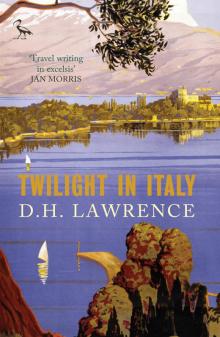 Twilight in Italy
Twilight in Italy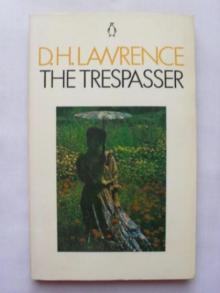 The Trespasser
The Trespasser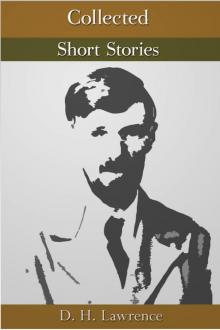 The Collected Short Stories
The Collected Short Stories The First Lady Chatterley's Lover
The First Lady Chatterley's Lover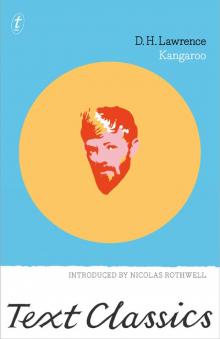 Kangaroo
Kangaroo Bay
Bay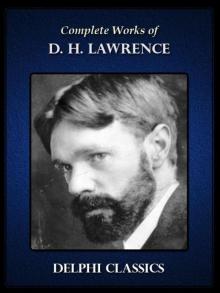 Complete Works of D.H. Lawrence
Complete Works of D.H. Lawrence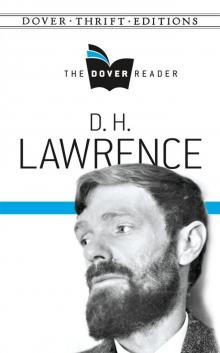 D H Lawrence- The Dover Reader
D H Lawrence- The Dover Reader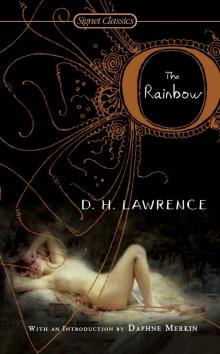 The Rainbow (100th Anniversary ed.)
The Rainbow (100th Anniversary ed.)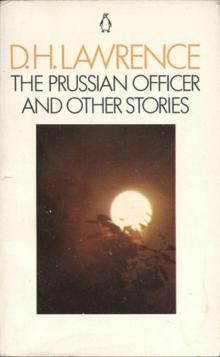 The Prussian Officer
The Prussian Officer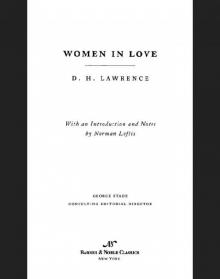 Women in Love (Barnes & Noble Classics Series)
Women in Love (Barnes & Noble Classics Series)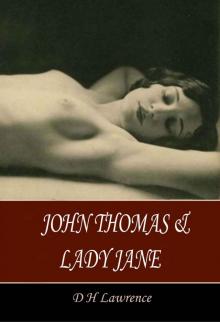 John Thomas and Lady Jane
John Thomas and Lady Jane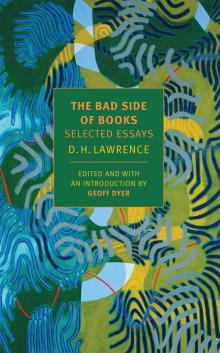 The Bad Side of Books
The Bad Side of Books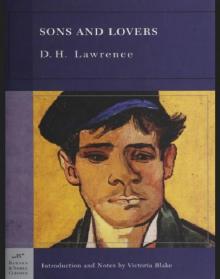 Sons and Lovers (Barnes & Noble Classics Series)
Sons and Lovers (Barnes & Noble Classics Series)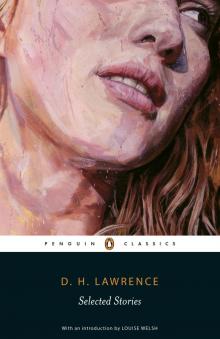 Selected Stories
Selected Stories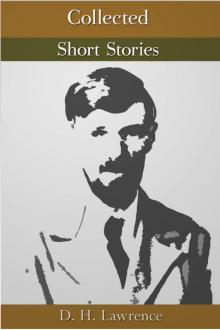 Collected Short Stories
Collected Short Stories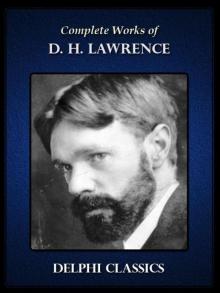 Complete Works of D.H. Lawrence (Illustrated)
Complete Works of D.H. Lawrence (Illustrated)